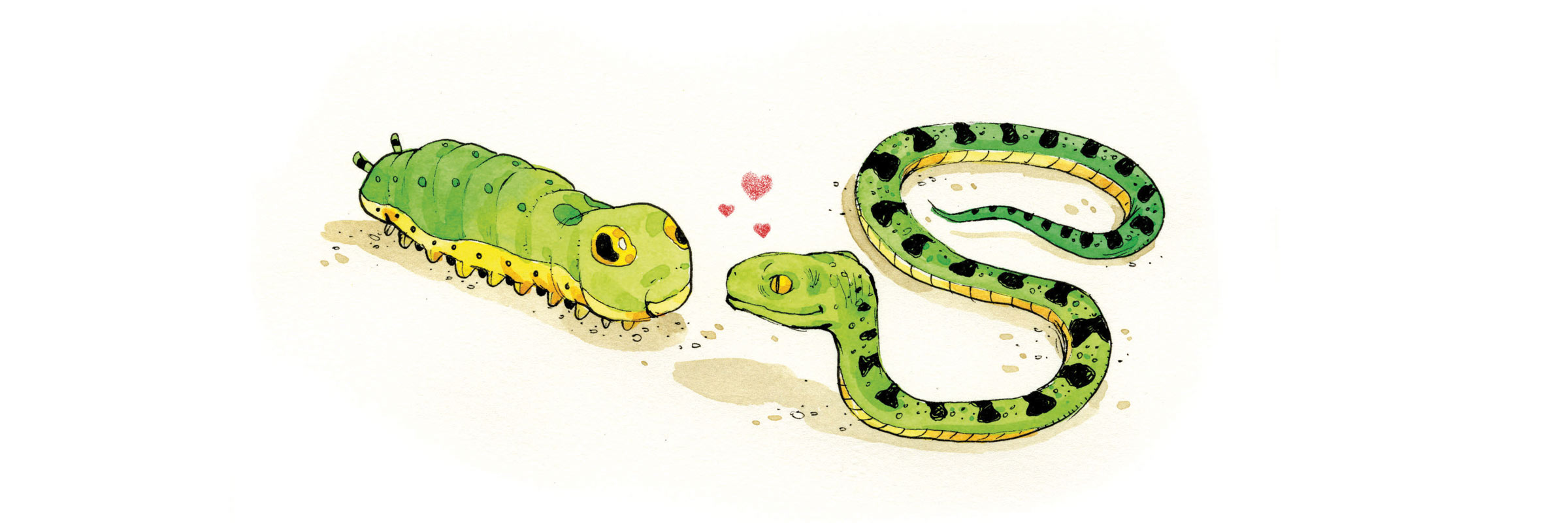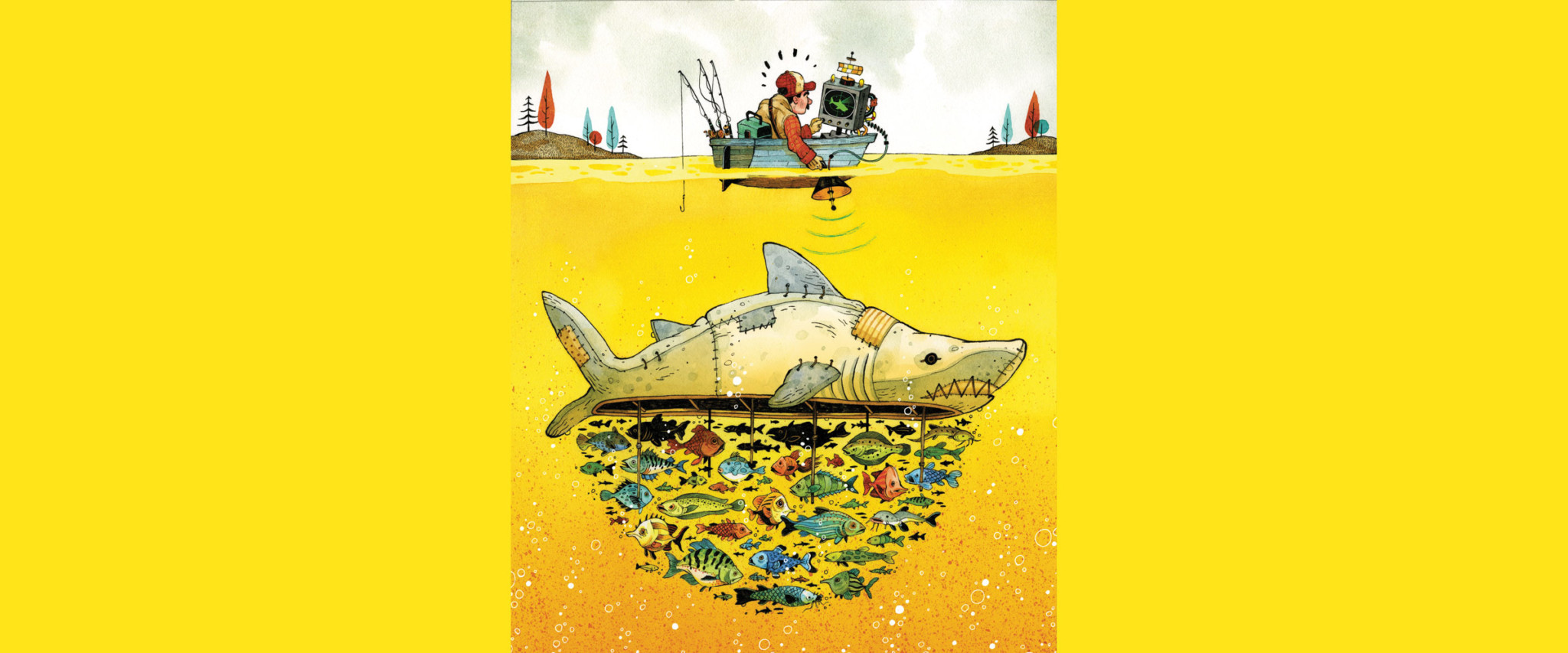The daily news is filled with tales of those who seek to deceive, from Lance Armstrong’s doping scandal to the political resurrection of the Appalachian Trail-hiking former guv Mark Sanford to Harvard’s academic cheating scandal. And most would agree these deceptions are no good; they’re simply lies rooted in a desire for folks to get what they want—and get it now.
But is deception ever a good thing? Well, yes, says Mark Moller, dean of first-year students and associate professor of philosophy. His example: If you let a friend into your house, and a killer soon follows and asks if your friend is there, what would you say? “Can you lie to save the life of another person?” Moller asks. “We need to think about intentions and the consequences,” he says.
Certainly not all deception has such high stakes. We love the red herrings in mystery novels and the optical illusions that scramble our brains. The fact is that disregarding the rules—or rewriting them entirely—can have all sorts of interesting and even positive results. And it happens all the time: Parents, animals, and the tiniest cells in our bodies are using deception to make the world a more interesting, vibrant, and sometimes magical place.
The Power of Evolution
Genetic “cheating” and malaria
In America, mosquitoes are annoying. In many parts of Africa, where the insects can carry the malaria virus, they can be downright lethal. Each year, the virus kills more than 500,000 people.
Yet surprisingly, the people most vulnerable to the disease are not necessarily the ones who live alongside these dangerous insects. Indeed, burrowed deep in the DNA of people native to malaria-plagued regions is a mutation—a genetic “cheat”—that gives them a resistance to disease, says Assistant Professor of Biology Ayana Hinton. “A good portion of Africans—nearly 40 percent in some areas—are carriers of the gene that causes some of their red blood cells to be deformed,” she says.
This sickle cell gene is something of a double-edged sword. With just a single copy of the gene, carriers are less susceptible to the deadly effects of malaria. With two copies of the gene, carriers develop sickle cell anemia, a painful and often deadly condition affecting up to 6 million sufferers in Africa alone. But there is a reason for hope: Far more people will carry just one gene and sidestep malaria than will carry two genes and be born with sickle cell anemia.
And if we or our ancestors never lived in an area with malaria-infested mosquitoes, we’re in luck: While the sickle-cell gene is common in parts of Africa, it is almost non-existent elsewhere, with fewer than two-tenths of a percent of Caucasians who are carriers and one-tenth of a percent of Asians who are carriers. Though this evolution happens slowly, says Hinton, it is incredibly powerful. “That may be one way we ‘cheat’ to survive,” she says.
Ho-Ho-Hokum?
Honesty isn’t always the best policy
Talk about conspiracy theories: Some think that the most elaborate hoax ever created—and one that may be perpetrated by millions of parents every winter—is designed to manipulate the most vulnerable. We won’t go into detail in order to protect the innocent, but you all know who we’re talking about. If it is all a hoax—and who are we to say, really?—good, honest people should be appalled, at least in theory, says Mark Moller. “If you think about it, we have this incredibly elaborate system of deception that everybody participates in,” from television shows to movies to a government-sponsored tracker that details the flight plan.
So why do we put up with the so-called ruse? The first reason, Moller says, is the ploy’s relatively brief lifespan. “You would never want your instructor to find out about academic dishonesty, for example, but we all know that eventually, kids are going to figure this one out. The fact that the truth is eventually going to come out matters.”
The second reason that we tend to forgive ourselves for this hefty transgression is that our larger goal is to infuse the “season” with a little bit of magic and wonder—things that tend to be in short supply as we get older. “Parents are really doing it out of a commitment to provide a certain type of experience for their kids,” he says.
Of course, even the most well-intentioned lies can backfire, notes Moller. “My brother couldn’t handle the fact that my parents may have lied to him,” he says. “It took him years to get over it.”
All that said (and for the record): We’re on Team Believe.
The Answer Just Came To Me
Sidestepping the conscious brain
For making complicated decisions—Should I put in an offer on a house? Accept a new job? Have a baby?—few tactics are as popular as creating a pros-and-cons list. Indeed, some like to take the process a step further, weighing each item by importance to come up with a thoroughly logical analysis that leads to a perfectly rational decision.
The only problem? This deliberate and conscious approach simply isn’t suited for complex problems that involve a lot of information, says Associate Professor of Psychology Seth Chin-Parker. “Researchers have found, for example, that when you present study participants with four apartment listings that have 12 features each, and you ask them to think through which is the best one, they’re very bad at choosing,” he says. Why? We can process only a limited amount of information in conscious thought, so the more information we have, the harder it is to distinguish the “right” choice from the “wrong” one. Researchers speculate that we overlook relevant criteria and improperly inflate the importance of some factors. As a result, we end up choosing something that doesn’t actually make us happy.
The good news is that you can deceive your conscious brain by letting your unconscious mind take a whack at it. In the same study, researchers found that participants who got the same information about the apartments but were distracted between the time they got that information and had to make a decision, actually chose more wisely than the deliberative participants. “It turns out,” says Chin-Parker, “that we can actually process more information more easily by not thinking about it consciously.”
So the folk wisdom may be right: If you want to make a good decision, sleep on it. You may not know why you’re led to a specific decision, but you’re more likely to make the right one. “Your unconscious mind can help orient you in the right direction,” says Chin-Parker. “Then you can use your conscious decision-making processes to formalize your plan and move forward.”

The Snake in the Garden of Eden
Deceit in the animal kingdom
Pity the poor Sphinx Moth Caterpillar. It’s slow, it’s clunky, and it hangs out in plain sight on a tree leaf. It might as well have a bright red bull’s-eye on its back as an invitation for birds looking for a juicy morsel. But that caterpillar has a surprising weapon in its arsenal: two perfectly placed fake “eye spots” that make its body look like a snake head instead of a snack. “Essentially,” says Professor of Biology Geoff Smith, “it’s trying to trick the predator into thinking that it’s something that it’s not.”
There are countless examples of such deceit in the animal world, from the leaf bug that blends in with the trees, to the bullsnake, which can blow air through its glottis and sound almost exactly like the far more dangerous rattlesnake.
Animals even have learned clever tricks to convince predators to move on. The hognose snake, for example, will “play dead” by flipping over and sticking its tongue out. The performance, however, doesn’t always hold up: “If you flip it over, it’ll flip itself right back, which isn’t very smart for an animal pretending to be dead,” says Smith.
There’s another benefit to these animals’ sneaky appearances and actions: fake eye spots or fangs delivering venom are “expensive” in an evolutionary sense, requiring lots of energy to fuel and maintain. (Indeed, rattlesnakes avoid, whenever possible, actually injecting venom into their prey for that reason.) But eye spots and a vocal trick cost almost nothing at all, allowing these animals to focus their energies on other pursuits.
So while we may admire and fear the raw power of the rattlesnake, it may be that we should be more awed by that bullsnake, who discovered an even smarter way to survive.

Batter, Batter, Suh-Wing Batter
The art and physics of the knuckleball
Thanks to intense strength training and those far-too-frequent illicit substances, Major League batters have gotten awfully good at propelling pitches into the outfield bleachers. What’s an outmatched pitcher to do? According to Steven Doty, professor of physics and astronomy, he should take full advantage of the principles of physics to make his pitches almost unhittable.
One of the first “trick pitches” pitchers add to their arsenal is the curveball: A pitcher snaps his wrist downward during the pitch to put a spin on the ball. The rotation causes one side to have lower air pressure, the other higher pressure. As a result, the ball is pushed (or curves) to the side with the lower pressure. “The fancy name is ‘magnus force,’ but any third-grader can tell you that it’s just air-pushing,” says Doty.
Then there’s the physics of the infinitely trickier knuckleball. The maddening pitch takes a route to the plate that’s more like a butterfly’s than a bullet’s, with deceiving dips and curves that make even the best batters flail. The difference is the minimal rotation that makes the effect of the ball’s raised seams more pronounced, and the fact that a pitcher can put the ball in his hand a different way each time, making the effect less predictable than that of the curveball. “One time, the seam may be on the lower left of the ball, and the magnus force pushes the ball up and to the right,” Doty says. “The next, it’s on the upper right, so the ball falls down and to the left. Because there is no set spin, the batter can’t predict the motion of the ball, and it looks instead like a set of random moves. But a physicist could tell you it’s just because of the way the pitcher started.”
Because the knuckleball requires more finesse than pure athleticism (retired knuckleballer Tim Wakefield tossed his pitches at less than 70 miles per hour, a snail’s pace in the big leagues), it’s often fetishized by baseball writers, who seem to think that maybe—just maybe—they could perfect the pitch and make it to the pros.
But, adds Doty, there’s a reason that the knuckleballer remains a rare breed at the highest levels. “What do you call a knuckleball that doesn’t knuckle?” he asks. “A $17 mistake—which is what a baseball costs. A failed knuckleball is out of the game, in the stands. And you’re not allowed too many of those mistakes.”
All Will Be Revealed
Why we love it when movies deceive us
When Hitchcock’s Psycho hit the silver screen in 1960, it wasn’t just the stellar performance of Anthony Perkins that attracted audiences in droves—it was also the shocking twist at the end. Hitchcock masterfully guides the audience to suspect a murderer who is not only innocent of the crimes, but who is actually a corpse. In a famous scene, the real murderer and the one we’ve been led to believe is the murderer seem to argue right in front of us, says Jonathan Walley, associate professor of cinema. “It’s a very elaborately constructed shot that seems to show us everything that we want to see, but the angle obscures a critical piece of information,” he says.
So why do we enjoy a movie that toys with us this way? We love Psycho not because it has tricked us—but because it has allowed us to trick ourselves. “If you were to go back and watch the film again, you can see that you’ve been misled, but you’ve never actually been given false evidence,” says Walley. “There were other ways to interpret the evidence right in front of you, but you didn’t know it at the time.”
And that honesty within the deception is where the joy lies. Unlike reality, we’re open to lots of deception in film, but there are rules. We can accept aliens with acid for blood or that time travel is a common occurrence, but when filmmakers violate the rules they’ve established in order to deceive us, we tend to feel disappointed.
That’s part of the reason dream and hallucination scenes fall short—they don’t offer “evidence” of deception. “If a magician is doing a trick, and in the middle of that trick, he says ‘Now I’m going to ask you to close your eyes,’ that’s not really how magic is supposed to work,” says Walley.

Developing an Authentic Voice through Mimicry
There’s a fine line between being influenced by something and stealing it, but for a student working to develop an original artistic voice, it’s impossible to avoid being swayed by the artists they study and love, says Wilson. “A student may be really into Georgia O’Keeffe, for example, and as she spends time with the artist’s work, she might begin to play a bit with form, or she might start to change her color palette,” Wilson says. “That’s a necessary part of the artistic process.” The goal, she says, is to have students deeply engage with other artists and thinkers while bringing something new to the table. “Good artists are always feeding off things around them. They should be inspired by the work of other artists and will want to respond through their own work,” she says.
Objectivity and truth in photography
In no small part because of the rise of Photoshop and other editing tools, it’s likely that any “too-good-to-be-true” photo these days is exactly that. With the exception of obvious fakes (like the photo of Superstorm Sandy bearing down on the Statue of Liberty, a Ghostbusters-era giant Pillsbury Doughboy, and Jaws), it’s often tough to tell what’s real and what’s been manufactured.
But don’t blame today’s tech for photographic dishonesty, says Assistant Professor of Studio Art Sheilah Wilson. Photos as far back as Mathew Brady’s images of the Civil War, in which corpses had been moved into horrifying but artful displays, are both iconic and certifiably faked. “These are images that were taken with a film camera, but they aren’t what they claim to represent,” she says.
That said, the problem may not be with the photos, but with our misguided understanding of reality. “I think there is a misconception that photography could ever be really objective. You always have a person at the other end of the camera, making decisions,” says Wilson.
At the same time, she says, the most effective of these images can help us see larger truths. “The manipulation of Brady’s photographs makes understanding the images more complex, but the images also convey a powerful message about the atrocity of war,” she says.
So should we be outraged by or accepting of these photographs? Wilson says there’s no right answer, as long as we understand the deception and take the time to think about its implications. “Especially with photojournalism, there should always be a certain amount of questioning—precisely because it claims to be objective,” she says. “Any time you see a photo that claims objectivity, you should ask yourself, ‘Who has the power here? What are the photographer’s motivations?’ Those are complex ideas worth exploring.”

